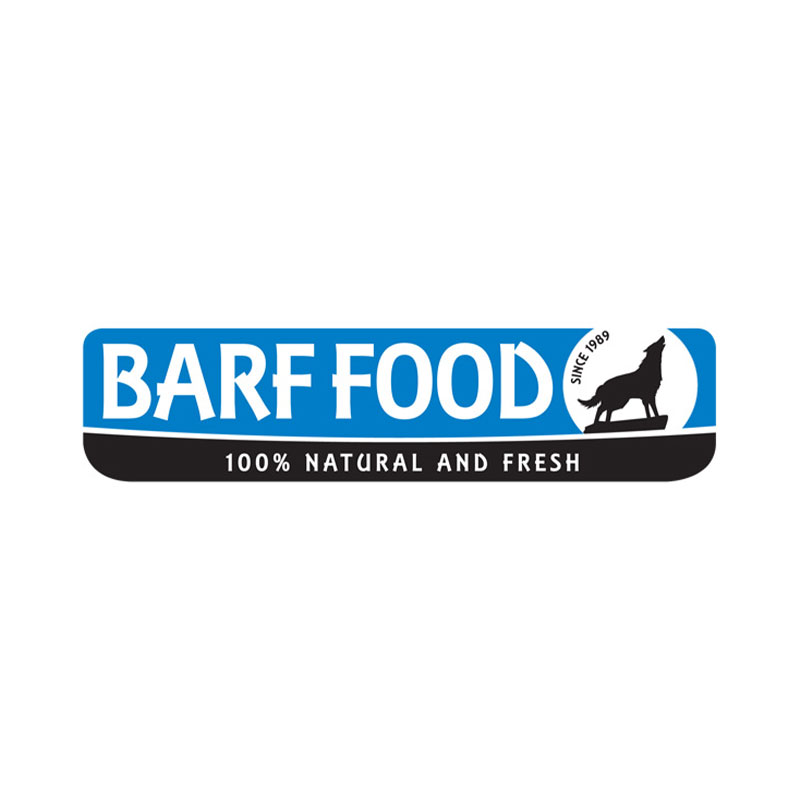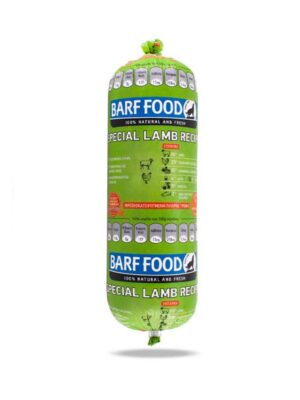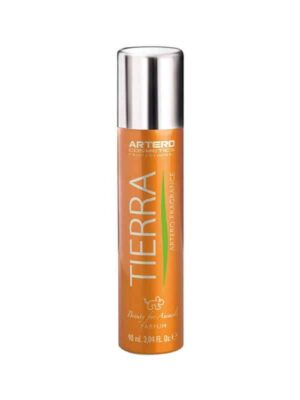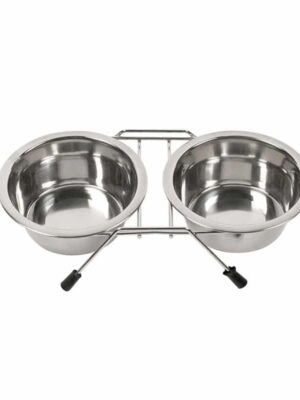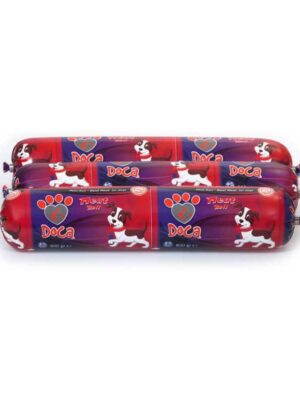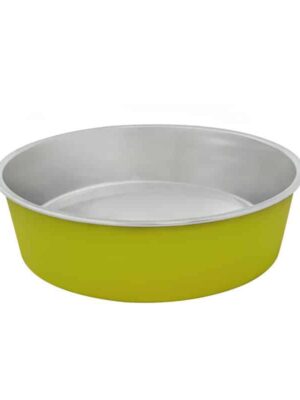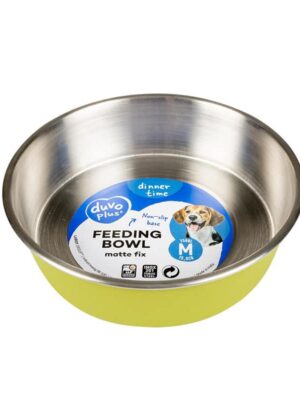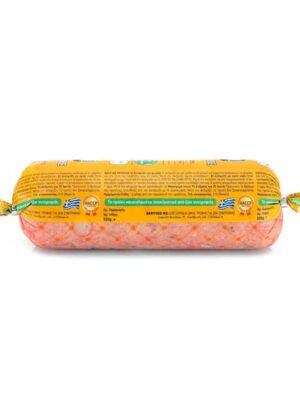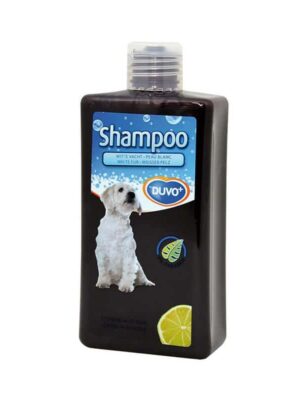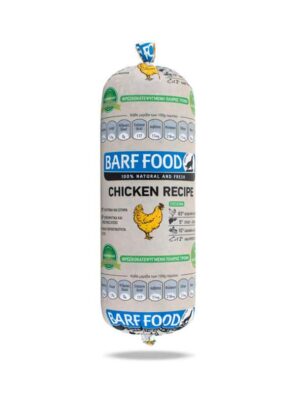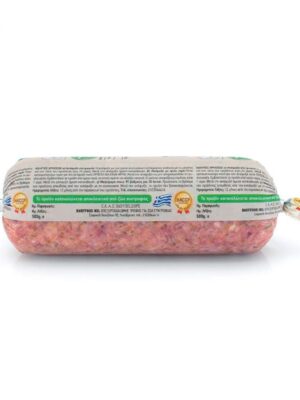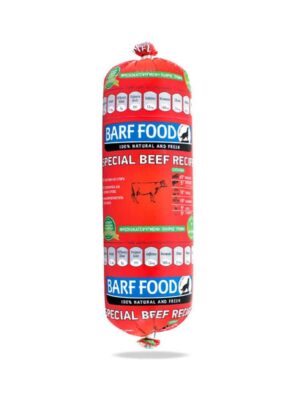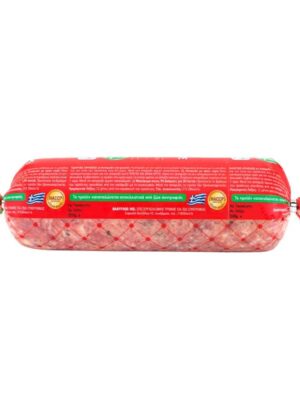Product Description
Barffood Special Lamb Recipe
The uniqueness of BARFFOOD's food is that the products are in line with the requirements for natural, healthy and proper nutrition of dogs. Η Barffood Special Lamb Recipe is 100% natural food without additives and preservatives after undergoing Shock deep freezing treatment. It exactly mimics the dog's food as it would live free in the wild considering that it is a carnivorous animal. In BARF food the aim is for the dog to receive meat, bones, offal, vegetables, eggs, yoghurt in a complete meal raw or cooked eliminating the feeding of dry & canned food. At your disposal there are studies in Greece and abroad that show the huge differences that the dog gets from BARF compared to dry food. Of course for proper dog nutrition and the absorption of all the above nutrients the correct proportions must be observed. The whole process has the following advantages: With the Shock process the products have a long storage time, they are kept with the highest safety at temperatures ranging from -18°C to -45°C in the heart of the product.
1. No preservatives need to be added to keep it suitable for consumption. (Can be kept in the freezer from -5C).
2. It stops the aging of the product and thus the product remains fresh when defrosted.
3. The products retain their properties, their freshness and do not deteriorate.
The benefits of BARF food for dogs
1) You greatly reduce the dog's risk of getting cancer. Because the dog is fed with 100% natural food which contains neither preservatives (E200-E299), nor colorants (E100-E199), nor various other chemical additives unlike the dry food and canned food of well-known commercial companies.
2) The age limit is raised. A living example is the Dingo dogs that live in the wild in packs and are fed exclusively on raw food from birth and have an age limit of over 20 years.
3) The dog has fewer or no allergies. His coat is soft, shiny & skin diseases are avoided.
4) The dog does not smell & his teeth remain healthy & free of tartar. (Neither his skin nor his breath smells).
5) The dog digests faster. (3 to 4 hours compared to dry food which takes around 12 to 13 hours).
6) Less stool production. They are firm, well-formed, and do not smell. Our dog's stools are always an indication of the quality of his diet and absorption of nutrients.
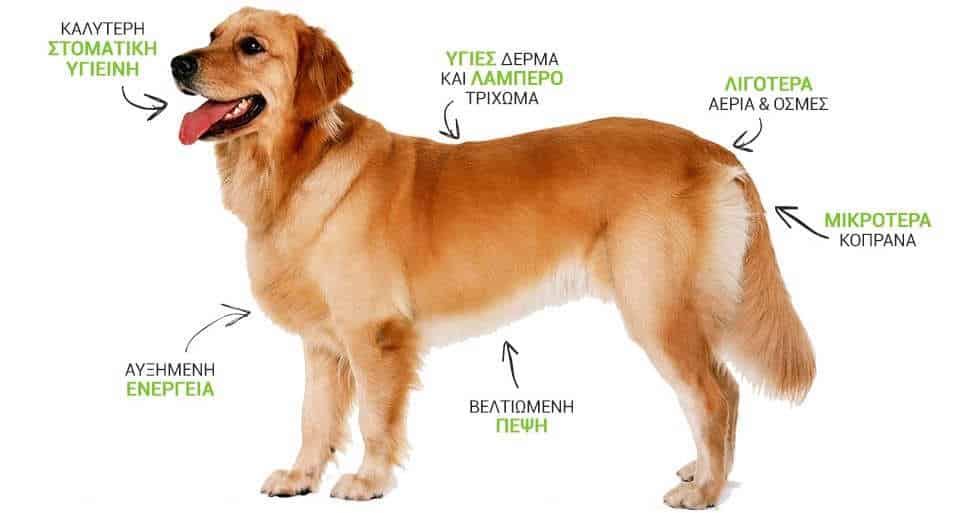
Additional information
| Βάρος | 1 κ. |
|---|---|
| Dimensions | 8 × 8 × 21 cm |
| Brand | Barfood |
| Age | Minor, Adult, Adult, Elderly |
| Race size | Large, Medium, Large, Small |
| Form of Food | Raw minced meat - Barf |
| Type of Diet | Gluten Free, Grain Free, Hypoallergenic, Single Protein |
| Special Needs | Allergies (Allergies), Joints (Joint Care), Gastroenterological Problems (Intestinal), Dermatological (Derma Care), Diet (light), Sterilised (Sterilised) |
| Taste | Lamb |
| Available Packaging | 1kg |
| Type of food | Super Premium |
Thawing
Process of defrosting the food
Separate the amount you want to give your dog and transfer it from the freezer to the refrigerator (about 2-5C) the night before. For a quicker process you can put it in a bowl of cold water. As the food contains no preservatives, it will keep in the fridge for 2-3 days, just like fresh meat. If any part of the food has been thawed, do not put it back in the freezer.
Transition to BARF
Dosage
Dosage:
In mildly active dogs the dosage per day is 2-2.5% of body weight. In high activity dogs the dosage shall be 3-3,5% of their body weight. The dosage of 3-3,5% to be followed in winter in dogs that live outside and have a short coat. For puppies and young growing dogs we recommend 4-5% of body weight. In puppies it is advisable to give BARF food after 4-5 weeks of age.
We would also like to point out that the amount of the dog's meal varies depending on:
α) His age
β) His body weight and
γ) From how active he is
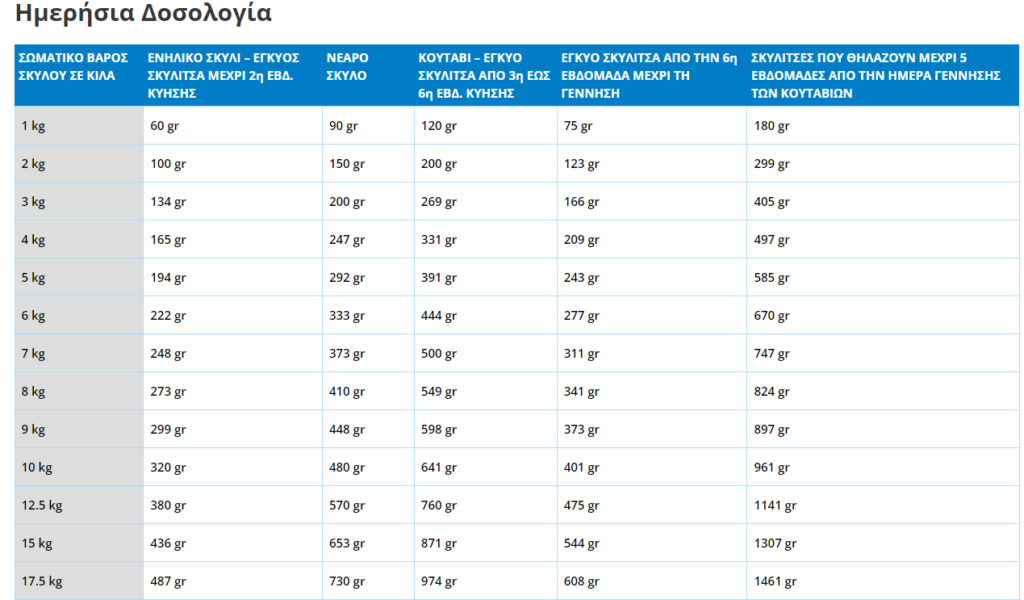
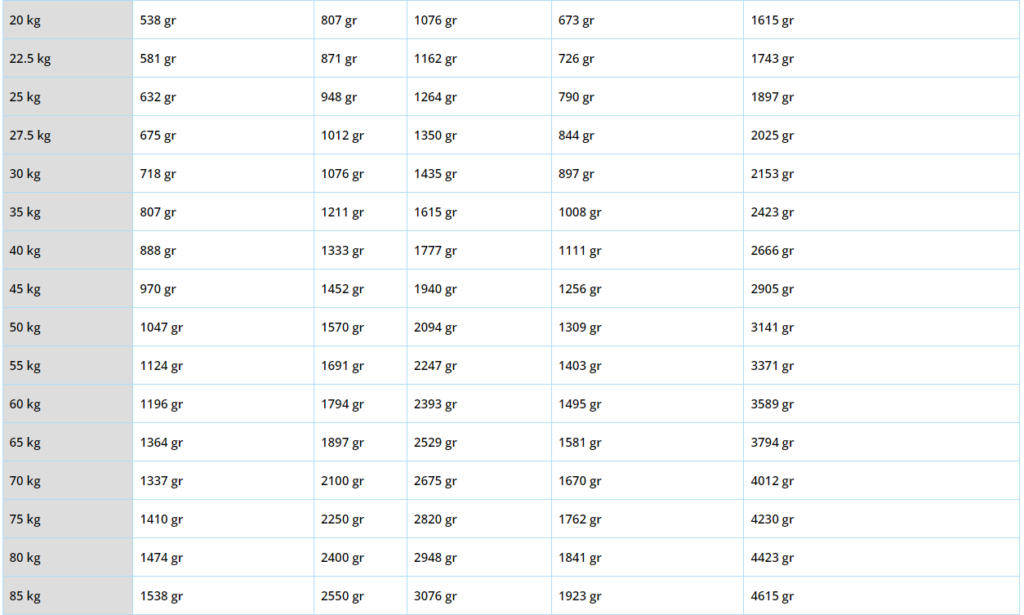
![]()
Ingredients
Ingredients
Lamb 50%, Whole Chicken 25%, Seasonal Vegetables and Herbs (Alpha Alpha, Goji Berry) 10%, Eggs 4%, Yoghurt 4%, Fruit 5%, Fresh Salmon Oil 2%.
Raw Meat
Raw meat provides an abundance of amino acids, proteins, enzymes, antioxidants, vitamins (A, C, D, D, E, K, B1, B2, B3, B5, B6, B12), iron, biotin, choline, folic acid, inositol, iodine, iodine, pantothenic acid, fatty acids, calcium, phosphorus, magnesium, iron, potassium, chromium, manganese, selenium, sodium, vanadium, zinc and coenzyme Q10. Raw meat also regulates the body's pH, thus aiding digestion and reducing degenerative and inflammatory problems associated with excessively acidic systems.
Offal (Liver, Kidney, Heart)
Liver is rich in vitamin A, manganese, selenium, choline, inositol and iron. It contains vitamins D, E, K in significant quantities. It is an excellent source of zinc, minerals and vitamin C. It also contains the entire vitamin B complex. It is a source of good protein, omega-3 and omega-6 fatty acids. It should be given in small amounts but at regular intervals.
Like the liver, the kidney-heart provides the dog with good quality protein, essential fatty acids and all the fat-soluble vitamins A, D, E and K. The kidneys are also a rich source of iron and contain zinc and all the B vitamins, and the heart is an excellent source of vitamins, protein and iron. It contains some essential fatty acids as well as taurine which strengthens the heart.
Vegetables (Cabbage, Lettuce, Spinach, Beetroot, Chard, Parsley, Carrot).
In the wild, the dog does not eat vegetables except those that are probably contained in the stomach of the prey. This means that they are eaten processed and not in their original form, because their digestive system is not able to break down cellulose, a substance they contain. This is why we mash the vegetables to break down the cell walls and release the nutrients.
Eggs Eggs are a source:
Vitamin B2 (contributes to proper vision and proper metabolism),
Vitamin B12 (essential for the development of RNA and DNA & also helps in the metabolism of fats and proteins).
Pantothenic acid is essential for the metabolism of food into energy and for the production of certain hormones and cholesterol.
Yoghurt
Yoghurt acts as a protective factor against infections. The lactobacilli it contains pass into the digestive system, improving the microflora of the intestine and protecting it from the growth of pathogens. At the same time, yoghurt improves the bioavailability of other nutrients. It increases the absorption of calcium and B vitamins. Yoghurt contains a high percentage of protein, calcium, phosphorus, potassium, molybdenum, zinc, B2, B5 and B12.
Fruit
In nature the dog would not eat fruit raw at will. Assuming it is a carnivorous animal, it would eat them ground up through the stomach of the prey. Fruit is rich in sugars and vitamins. For this reason, because they contain sugars, their content in the raw diet should not exceed the upper permissible limits so that the dog can digest them properly.







